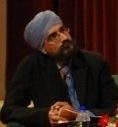One of the top 100 thinkers in the world, Turkish born Nouriel Roubini, was at Dubai’s Global Islamic Economy Summit (GIES), and he stated, “…there is a need for a more resilient system, and that’s where there is potential for the Islamic system. It is less volatile and potentially more stable than conventional financial systems. The advanced economies can learn from the Islamic system in this respect…. The Halal economy is a real opportunity, but it needs to be more standardised and integrated into global markets.”
The last six weeks, from WIEF (UK) to GIES (Dubai) to WIBC (Bahrain) and this week’s Islamic Development Bank’s Roundtable in Malaysia, Opportunities & Challenges in Global Halal Industry/Economy Development, has raised the profile and importance of the US$1.3 trillion (RM4.2 trillion) Islamic finance, an “ethical” financial lubricant, and US$2.3 trillion Halal Industry, a real economy sector.
Now, with the 2014 WIEF to be held in Dubai, recipient of World Expo 2020, there is pressure on follow-up and followthrough on some of the “lowhanging” deliverables tree.
Sizing & Seizing
According to 2103 State of the Global Islamic Economy report by Thomson Reuters, in collaboration with Dinarstandards, its core sectors (below) are structurally impacted by Islamic values and driven by end user, retail and business, needs and demands:
• Food: US$1.09 trillion expenditures (2012)
• Clothing: US$224 billion
• Travel: US$137 billion
• Media/Recreation: US$151 billion
• Pharmaceuticals: $70 billion
• Cosmetics: US$26 billion
• Islamic finance: US$1.3 trillion
The non-Muslim/non-Islamic players dominate the Halal food sector, top 10 exporters are non-Organisation of Islamic Cooperation countries and 85% of food supply chain is controlled by non- Muslims. The report will attract other such players looking to capture growth stories i n today’s low g rowt h environment of 2%.
Where are the Muslims and Muslim-owned halal producing companies? Will Muslims continue to play the role of ‘slaughtering and consuming’ fast moving consumer goods manufactured/processed by non-Muslim companies?
Therefore, packages for lamb, beef, goat, chicken, etc, should have an easy to understand logo for gassing, stunning or neither and also show if hand or machine slaughtered. The consumer in the geography will decide what method of “Halal slaughter” resonates with them and purchase accordingly.
[Rushdi Siddiqui, former global director at Dow Jones Indexes and global head at Thomson Reuters in Islamic finance, is now president/ ED of a (halal) US-based agro-food company.]
THE MALAYSIAN RESERVE, 09 December 2013

